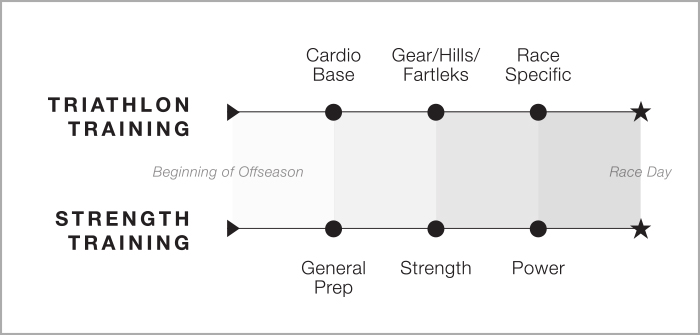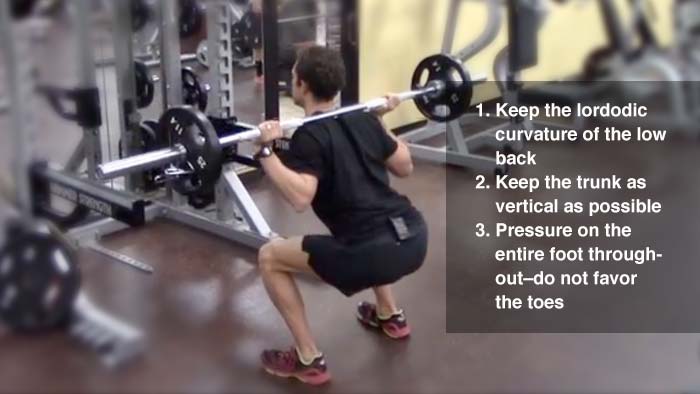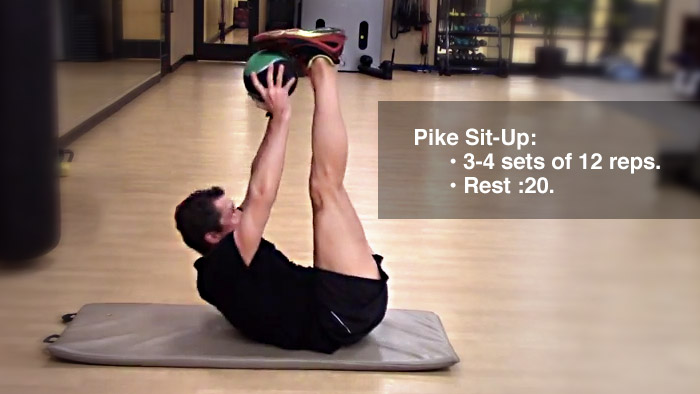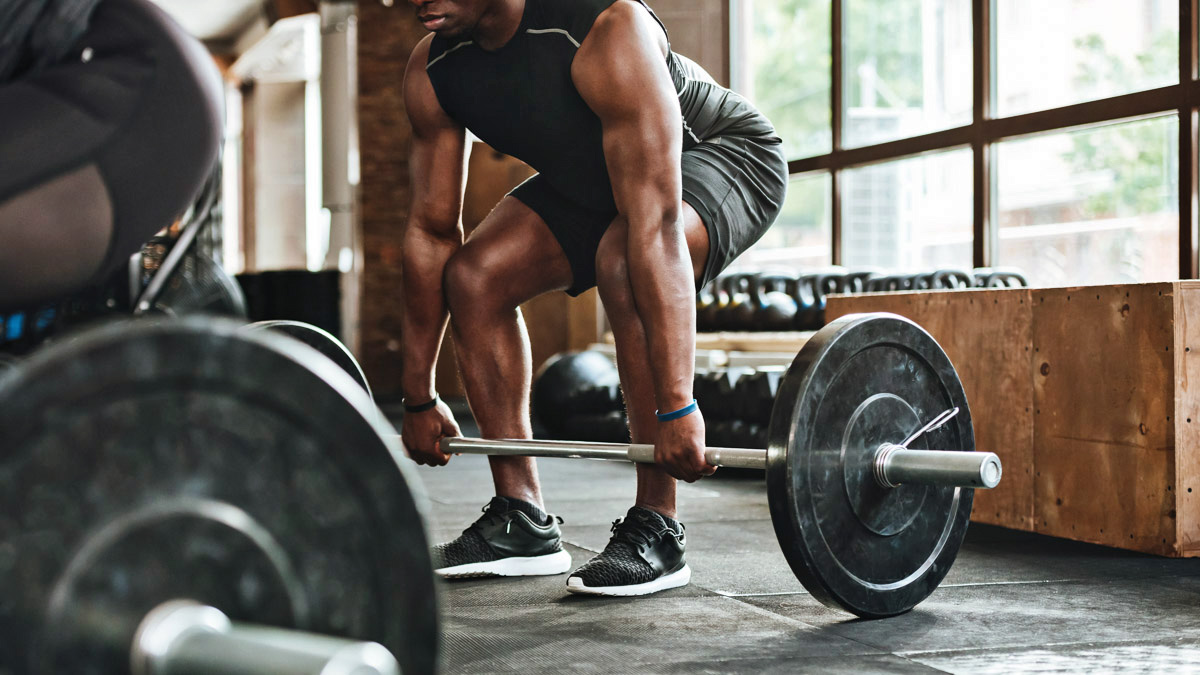By now you’ve heard about the many benefits of strength training for endurance athletes, and perhaps you’ve already incorporated some into your training plan. If so, you’ve probably seen near-immediate results and are excited about this positive uptick. Strength in the weight room, however, is meaningless if it does not transfer into race day performance. In this article, we are going to explain what triathletes can do in the swim, bike, and run to make the strength gained from the weight room effective where it really counts.
Less Reps, Heavier Weights
Offseason training begins with simple base training. This creates the foundation for what we build upon on the road or in the pool. Likewise, the same goes for the weight room. Starting simple and gradually increasing training intensity is integral to each aspect of training.
Upon completing this foundational phase of training, time spent in the weight room can have a great impact on triathlon training if coordinated properly. Your goal is to start increasing weight and resistance during this pre-competition/build phase so that you can increase your power and economy. Doing so will allow you to better incorporate race-specific training like hills, fartleks, and big gear work, all of which require high force.
Rate of Force Development
As training progresses, your triathlon training will begin to more closely resemble race day scenarios. Strength training will become less focused on strength and more on power, which can be quantified by Rate of Force Development, or RFD.
Why is power development important for a triathlete? The short answer is that improving RFD decreases injury risk, improves economy, and directly improves force capability and efficiency of each step, stroke, or cycle. Higher force capability, when generated at a high rate of development, means that you can improve your stride length while maintaining frequency, thus improving your race times.
RFD is an aspect of performance that can best be improved by incorporating strength training and plyometrics. This brings us back to how changing the training approach after improving maximum force capability can be an integral component. As triathlon training mimics race day, strength training should progress into more power development. This can be accomplished by implementing plyometric training such as box jumps.

Building Race Specific Strength
While working on strength development in the weight room, strength can be gained through a swimming, biking, and running program.
Utilizing swim tools is a great way to gain strength in the pool. Stretch cords can be used as a dynamic warm-up before beginning a swimming session, as they simulate the swim stroke while increasing strength in many of the connector muscles. Swimming with a band around your ankles promotes upper body engagement while the ankles are bound together. Swimming with a buoy eliminates the use of legs all together, which will isolate the core and upper body. Paddles increase resistance while helping to develop an effective pull. Kicking while holding a board increases lower body strength and power. Fins increase the workload on the lower body.
On the bike, strength can be gained with a focus on adding resistance through hilly routes, hill climbs, headwinds, and big gear work. Similarly, running on inclines helps increase power output and enhances running economy. Just remember that hill training greatly increases the force load, so be sure to progress properly.
Below are two example weeks that will help guide your strength-building workouts.
Example Week 1
Monday: Swim 2400 yards while working on full-body strength
- Stretch Cords 2 x 10 focusing on a quick catch
- 600 warm up focusing on establishing a rhythmic stroke: 30
- 12 x 25 kick with fins/board, odds easy, evens all out focused on quality form: 10
- 4 x 50 band/buoy with connected body rotation: 10
- 4 x 50 band only focused on a quick tempo: 10
- 3 x 200 paddles/buoy moderate focusing on a perfect catch: 10 seconds rest
- 2 x 150 paddles/buoy fast focusing on a perfect pull: 15 seconds rest
- 1 x 100 all out holding your speed throughout: 20 seconds rest
- 100 cool down
Tuesday: Bike for 90 minutes
After an easy aerobic warm-up, find a gradual climb. Build your effort to zone 2 while keeping your cadence under 60 RPM. Hold this effort for 30 minutes of continuous riding. Finish with 20 minutes at zone 3 effort alternating between 5 minutes at 60 RPM, 5 minutes at 70 RPM, 5 minutes at 80 RPM, 5 minutes at 90 RPM. Spin easy for your cool-down.
Wednesday: Run for 40-60 minutes while working on full-body strength
After an easy warm-up, find a moderate uphill and run 4-5 x 3 minutes, building to zone 5. Make sure you are using good form on each repeat. Recover easy down the hill. Then head to a flat terrain and do 5 x 30 seconds at race pace, and then 60 seconds easy. Focus on quick and powerful strides. Finish with an easy cool down.
Thursday: Swim 2,500 yards and bike for 60-90 minutes
- Stretch Cords 6 x 10 focusing on a high elbow catch
- 200 easy swim: 10 seconds rest
- 4 x 50 kick easy: 5 seconds rest
- 20 Tricep Dips on pool deck
- 4 x 50 band/buoy: 10 seconds rest
- Single Arm Stretch Cords 4 x 10 focusing on a good pull
- 200 moderate swim: 20 seconds rest
- 4 x 75 kick, build each 25: 10 seconds rest
- 15 Tricep Dips on pool deck
- 4 x 75 band only: 10 30 seconds rest
- Stretch Cords 2 x 10 focusing on a high elbow catch
- 200 fast swim: 30 seconds rest
- 4 x 100 kick as best efforts: 15 seconds rest
- 10 Tricep Dips on pool deck
- 4 x 100 band/buoy: 10 seconds rest
- 100 easy cool down
For your bike workout: after an easy aerobic warm-up, find a 6-8 percent grade hill and do 4-6 x 3 minutes, building to zone 5. Stay seated on each climb. Recover easy down the hill.
Friday: Off, enjoy a rest day!
Saturday: Brick Training
Aerobic brick workout gaining as much elevation as you can.
Sunday: Run for 75-100 minutes
Head to the hilliest trails you can find for your long run. Start easy and progressively build your effort.
Example Week 2
Monday
Swim: 2,500 yards working on combined upper/lower/core strength
- Stretch Cords 3 x 10
- 600 easy warm up: 30
- 4 x 50 as 25 tarzan/head up, 25 free: 10
- 2x (4 x 25 band only: 10, 4 x 150 pull only as 50 easy, 50 hard, 50 easy: 20, 4 x 25 all out with fins: 20)
- 100 easy cool down
Tuesday
Bike: 70 to 90 minutes
After an easy warm up:
2-3 x (10 minutes big gear at 60-75 RPM at moderate effort, 10 minutes at zone 3 effort at 90 rpm, 5 minutes easy) Spin easy for cool down.
Wednesday
Run: 30 to 60 minutes
After an easy warm up, find a steep hill for hill bounds. 3-5 x 20 seconds bounding up the hill, pushing off your toes. Easy jog recovery down the hill and repeat. Finish with an easy cool down.
Strength: Combo upper/lower/core
Thursday
Swim: 3000 yards
- Stretch Cords 3 x 10
- 400 warm up, stroke focus: 30 seconds rest
- 16×50 kick with fins, odds easy, evens fast: 10 seconds rest
- 4 x 50 band with buoy focusing on stroke rate: 10v seconds rest
- 4 x 50 band only focusing on your catch: 10 seconds rest
- 6×200 paddle/buoy build 1-3, repeat build: 15 seconds rest
- 200 easy swimming
Bike: 50 to 90 minutes
After an easy aerobic warm up, find a hill that is 5 percent or steeper and perform 5 x 2 minutes hill climb. At 30, 60, and 90 seconds attack HARD for 10 pedal strokes. Recover easy down the hill.
Friday
Off-enjoy a day off!
Saturday
Brick: Aerobic Brick over hilly terrain
Sunday
Run: 60 to 90 minutes
After a 30 minute warm up, perform a ladder fartlek over a moderately hilly terrain. Aim for 1 minute on, 1 minute off, 2 minutes on, 1 minute off, 3 minutes on, 1 minute off, 4 minutes on, 1 minute off, 3 minutes on, 1 minute off, 2 minutes on, 1 minute off, 1 minute on, 1 minute off. Descend the bottom half of the ladder to finish faster! Finish with an easy cool down.
It is important to incorporate strength training into your training program in order to improve on different areas that affect triathlon performance. To take full advantage of the adaptations created by swimming, biking, and running, strength training must reflect any changes that happen in your triathlon training. Combining high force output strength training with hill runs and fartleks is a great combination.
Moving on to more race specific training should elicit a change in the weight room from strength training to increased power training utilizing plyometrics and other explosive movements. An important thing to consider is that your main focus is performance on the road and strength training is strictly a compliment to your triathlon training. If you ever feel like your strength training is negatively affecting your swimming, biking, and running; you should take a step back and reevaluate your strength training program. The weight room is an important tool that can take your performance to new heights, but it must be coordinated properly with your triathlon training. So get out there, push your boundaries, and reach for new milestones!







